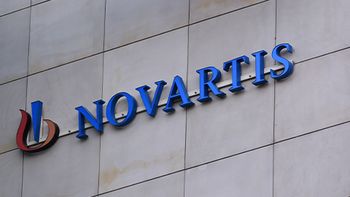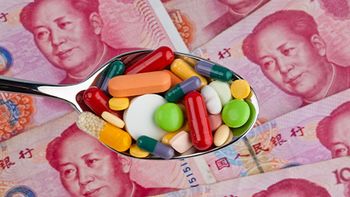
- Pharmaceutical Commerce - September 2021
- Volume 16
- Issue 3
The Temperament for Transport
A conversation with Volker Kirchner, director, temperature control solutions, World Courier
A fascination with the world of logistics “was always my kind of thing, even as a kid,” Volker Kirchner recalls proudly. “Some people played computer games—shooters or something like that. I was always the SimCity or the A-Train or Transport Tycoon kind of person.” Not surprisingly, the natural progression from there, and his first choice when he started his career, Kirchner says, was the logistics field, beginning his professional life in freight forwarding and traditional trucking. Enjoying his work but seeking something more challenging, the German native eventually joined World Courier, where, today, as the company’s director of temperature control solutions, he is approaching 20 years with the organization, which is part of AmerisourceBergen. Kirchner notes, however, that his introduction specifically into healthcare- and pharmaceutical-related logistics happened more so by accident, noting that World Courier 20 years ago didn’t just serve those sectors exclusively.
“It wasn’t that I was looking for a healthcare logistics company, but I certainly appreciated the fact that we evolved more into that over time,” he says. “I just love the challenge, the puzzle of getting a new drug from A to B—and maybe you need to go via C. Then suddenly what you’re transporting turns out to be something that is more important than other products; therapies that really make people’s lives livable.”
That mindset likely helped guide Kirchner and his globally dispersed team through some very challenging times in pharma distribution in the last 20 months. Pharmaceutical Commerce caught up with the expert in temperature-controlled transport, logistics and packaging to discuss all things Covid, cold chain, and taking on future threats to the safe delivery of critical medicines.
1. In our 2020 pharma cold chain
It’s been really a remarkable episode. Since the start of the pandemic, waiting for the first signs of a vaccine coming out, I think what we noticed at first, in terms of temperature requirements, the temperature ranges involved, and the packaging solutions sizes, was that there was really nothing new under the sun that was needed to handle this. We didn’t have to develop new packaging systems on the market. Everything that you needed to transport the vaccines or the components needed to produce the vaccines was already there essentially.
But what we saw happening in late autumn [2020] was a level of coordination needed in the industry and between all players—the manufacturers, the logistics providers and the packaging providers. The situation was so unique and so unexpected that the coordination needed to get that moving at speed was not something that had been tried before. What we saw happening in the early part of this year was everyone scrambling to source packaging. Manufacturers were scrambling to provide information to the logistics partners on what was needed in terms of requirements. In the absence of clear information, the logistics providers were reaching out to packaging providers to get their stock.
Everyone was trying to secure things as much as possible, and that led to a rocky start in the beginning. Because every packaging developer, from Styrofoam box producers to the more-involved packaging suppliers, we’re receiving requests from every major player on the market trying to get as much as possible in excess of their monthly production. So logistics providers were unable commit to any one client to provide a certain level of service. That went on for a while until it became known how much was going to be needed to be transported to where, in what volumes and which temperature ranges. Then suddenly it became apparent, “oh, we have the ability to do this with the existing tool set.”
The lesson learned moving forward is that we see that unexpected things can happen at any time that no one really has a contingency plan set up for. The tools may be there, but knowing exactly how to then come together and to sit down and work out a plan to completely address any new situation will really be necessary moving forward. I think that’s something that all sides learned in this.
Maybe it’s strange to bring the Ever Given situation (the large container ship that blocked the Suez Canal in March) into this question because it seems so unrelated [to the pandemic]. But with both, we have seen two cases recently where things just happened that even the most comprehensive contingency plans really didn’t foresee, and that caused major shock waves throughout the entire logistics ecosystem. We didn’t need to start from scratch, but everyone was in the same boat essentially.
2. How did the Covid vaccine distribution effort unfold early on? Was it more complicated to ship vials outside of the US?
It was. Another unexpected thing was the complete drop in global air freight—the unavailability of airplanes, flights being canceled everywhere, almost no planes in the sky. That really made life difficult. The shipments themselves, they were essentially normal vaccine shipments, so nothing that airlines had a problem with in general. There were no regulatory concerns like if you were transporting patient specimens from an Ebola trial, for example. So the shipment itself was fairly straightforward and simple.
What was most helpful was the overall political will for this to move forward. There were no obstacles being put in place by any authorities, any governments. That facilitated things greatly. But suddenly being down on air freight capacity by 60 to 70% in the beginning of the year or during the first months of the distribution, that lead to big logistical challenges in securing space on airplanes.
Those of us who don’t have a dedicated fleet, don’t have to fuel and fill their own airplanes had it a little easier because we could source from various different passenger and cargo airlines to secure space. The big integrators who have their own fleets and aircraft, they were a little more autonomous in terms of not needing to cancel those freighters; you still saw freighters moving almost regularly. On the other hand, those were also in high demand everywhere else, and some countries, of course, didn’t allow any foreign operators to come in.
3. Have those dynamics stabilized in recent months?
I think we’re coming back up to almost 2019 levels, as far as I’ve seen. At the moment, it looks favorable, but I think we all sort of have that worried look toward the autumn of this year to see what happens next.
4. Supply chain demands triggered by the pandemic and other factors (i.e., emergence of advanced and complex therapies, evolving technologies in cryogenic storage/transport) have required next-level support across functions such as logistics planning and data monitoring, analysis and communications. To that end, how have approaches to internal quality management and GDP and GMP changed to better safeguard the cold chain? Are gains from “smart thermal packaging” beginning to bear out more in practical application?
In the area of smart packaging and the new technologies that are coming out, we see a lot of products in the market now that have integrated live temperature loggers and things of that nature. With cell and gene therapies, the autologous therapies, while it’s a highly new area of medicine, they’re being transported at cryogenic temperatures and the dry shipper is mainly being used in airlines. I’m going on 20 years at World Courier and I think even the first weeks back when I joined the company I saw dry shippers being used; the tech has been around for a while.
So this connects a little bit with the first question, because the tool sets to transport the product and to maintain the temperature, there’s been nothing very new there. Smart technology, though, is an interesting area, because you hear a lot of promotion about GPS loggers or live temperature loggers, with GSM or Bluetooth that offer telemetry. We and others are still excited about the new developments there, and there are certainly enough new products coming out, especially now.
But I think one surprising thing is the expectation on how smart technology related to packaging would change the pharmaceutical quality system and approach. It’s surprising insofar as how it hasn’t affected it as much as we thought it would. I don’t mean to say that these applications don’t have a great benefit, operationally speaking, in terms of internal processes or monitoring. But as far as the quality system or the GDPR, the telemetry, or the metrics that these devices offer, regulatory authorities are mostly still expecting an unbroken temperature record for temperature-sensitive products. Those have been supplied for decades through temperature loggers that are read out after the fact. There’s nothing really being demanded by the regulators for these kinds of shipments that would be assisted through these smart technologies.
Also, a lot of these devices don’t offer the level of accuracy in the temperature probes that would allow them to be used as the sole regulatory temperature record for a shipment. The quality need for these devices has not been there yet. We very rarely have seen any requirements for providing a humidity record, air pressure, or light or tilt— things that some of these loggers offer from all along the shipment chain; they aren’t really quality relevant. We do see these devices gaining appeal for logistics providers to track the location of the package. Did, for example, the airline really send it to New York and not misroute it to Miami instead? It does offer great service-recovery options, and it’s a good way to secure transfers for en route if you’re worried about a large shipment being hijacked potentially in some way.
I think we’ll see these devices continuing to come onto the market and being used in ways that will facilitate the transport of products and being an internal process safeguard on the logistics side, but will be not really be as high a requirement from the customer side.
5. It’s safe to say, then, that these technologies won’t be replacing the function of traditional data logging anytime soon, correct?
Honestly, not. We don’t have any customers that I can think of who require for clinical purposes a compliant temperature record for the shipment who do not want us to put an actual, pharmaceutical grade temperature logger inside the shipment as well as one of these live devices.
What we’re seeing is these live devices when they’re being required or requested by clients, is they’re being used as an add-on layer of visibility into how the temperature is trending. Can you see how it’s changing over time? Can you monitor the location of the shipment to prepare the people at the loading dock to receive it? But, in the end, if temperature control is a requirement, you’ll always see a robust traditional kind of temperature logger being requested as well, because at least on the regulatory side, these [smart] devices aren’t yet up to spec in terms of being able to safely offer the record for the entire shipment. Also, there is such a price differential between the highest level of these devices, these live loggers, and single-use USB temperature loggers; it doesn’t make sense to replace them just for having a more modern device.
6. Do you see regulators perhaps providing guidance on the more practical use of these smart, live shipment devices?
For controlled substances, I’d see requirements on the government side coming for being able to monitor the position and the location. But in terms of safeguarding the temperature stability or the product stability of a temperature-sensitive product, I don’t think that there is going to be much coming from that side because the perfect solution for that was already there to begin with. If regulatory authorities are concerned with whether a product was exposed to any adverse temperatures along the transport chain, all they need in the end is the complete record from A-Z.
7. What are some particular challenges in clinical trial logistics related to the cold chain and keeping today’s time- and temperature-sensitive medicines moving?
If you think of autologous or gene therapies, where you’re transporting the patient’s own material somewhere, maybe across the world, to be modified in a way to treat for a life-threatening condition, those are shipments that are so critically important, even though there is mostly no new temperature ranges involved; it’s mostly going to be cryogenic storage, partially on dry ice.
So, again, we’re still dealing with well-known temperature ranges. But the importance and the implication of possible service failings means that you have to really make sure ahead of time that these packaging tools that have been well established are the safest possible things to use in this regard.
This brings us back to smart packaging technology; in this case, it’s not a requirement we’ve seen so far for either autologous or allogeneic therapies, but it makes sense for the logistics provider and all points involved to have very close visualization around questions such as 1) where is the unit?; 2) has it left the clinical site?; and 3) has it reached the hospital at the end of the chain?
Nothing can go wrong with these shipments; that’s not an option. There’s very little margin for error in these therapies. So very close coordination between all players is crucial—having great eyes on things through these new technologies like GPS loggers and keeping all points coordinated: the airlines together with the freight forwarder and others involved.
What we’ve seen from our work with these therapies is it’s a great level of complexity to make sure that all risks in the process are already mitigated. It’s less of a temperature-control challenge than an overall logistical one.
8. Are there any unique “last-mile” challenges associated with the transport of cell and gene therapies?
Honestly, for these advanced therapy shipments, it’s the first and the last mile that are usually the easiest ones. Particularly if you’re spread out, if you have a global presence—and that’s a key to success here as well, knowing that you have your own staff at all points of the chain, that the training and the knowledge that you need to handle these safely are in your own hands, not outsourced to someone who may or may not have expertise.
If we have control over the logistics at both ends, it’s really more about the “main mile” or the main leg; it’s that flight from New York to Frankfurt or from Buenos Aires to Shanghai. That’s the black hole that you fall into where you have to hope the airline has loaded the shipment to the right aircraft, hope that the storage booked is the one that’s executed. It’s really speaking to the airlines and stressing the importance of the shipment and making them aware of what’s at stake. Even putting artwork or signage on the parcels to express that this is a lifesaving shipment for the patient at the end of the delivery. Including artwork that depicts a patient or patients can impress on anyone involved, any warehouse worker in any warehouse across the world that this is a special shipment.
9. That’s interesting about the artwork being a big factor but maybe an overlooked one. Does your company do the design or do you work with partners on things like that?
We’ve spent a lot of time working with our own people and outsourcing to our friends and partners in artwork development and marketing development on the most effective ways to convey this impression to handlers and to logistics people to help make sure a box, wherever it’s standing, is seen as something special. If adding blinking lights to it would be helpful, we would consider that as well.
For these kinds of shipments, nothing is too crazy or too off the table to make sure that they don’t get stuck somewhere in a corner and aren’t seen again. Because [saving] five hours or 10 hours could be the difference between a successful shipment or a patient not making it. [The artwork] has been helpful in making it easier to convey to people involved, be it a driver or an airline booking rep, that there’s a life on the line here.
Articles in this issue
about 4 years ago
When the extreme hits homeabout 4 years ago
Pharmaceutical Commerce - September 2021 Issue (PDF)about 4 years ago
Pharma Cold Chain: Pushing the Envelopeabout 4 years ago
The Opportunity for Sustainabilityabout 4 years ago
Shipping Strategies in Unusual Timesabout 4 years ago
New Blueprint for HCP Relationshipsabout 4 years ago
2021 Cold Chain Service Provider Directoryover 4 years ago
The True Reliability of Real-World Dataover 4 years ago
The Future Heats Up Due to Cold ChainNewsletter
Stay ahead in the life sciences industry with Pharmaceutical Commerce, the latest news, trends, and strategies in drug distribution, commercialization, and market access.





